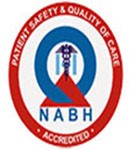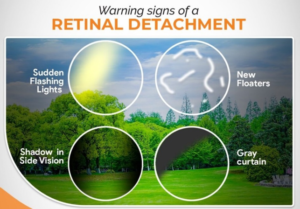Orbit and Oculoplasty
- Home
- Orbit and Oculoplasty
Orbit and Oculoplasty deal with plastic and reconstructive surgery around the eyeball. Ophthalmic plastic surgery is required to improve eye function, and fixing eye-related medical conditions and the added advantage is – it improves appearance.


What is Ocuplasty
Oculoplastic, or oculoplastic surgery, includes a wide variety of surgical procedures that deal with the orbit (eye socket), eyelids, tear ducts, and the face. It also deals with the reconstruction of the eye and associated structures. Oculoplastic surgeons perform procedures such as the repair of droopy eyelids (blepharoplasty), repair of tear duct obstructions, orbital fracture repairs, removal of tumours in and around the eyes, eyelid and facial reconstruction.

Prosthetic Eye
An ocular prosthesis, artificial eye or glass eye is a type of craniofacial prosthesis that replaces an absent natural eye following an enucleation, evisceration, or orbital exenteration. The prosthesis fits over an orbital implant and under the eyelids. Though often referred to as a glass eye, the ocular prosthesis roughly takes the shape of a convex shell and is made of medical grade plastic acrylic


our services
Conditions under which Ocuplasty Surgery is Required
- Droopy eyelid
- Eyelid Malposition
- Treatment for watering eyes
- Eyelid Tumor
Conditions under which Ocuplasty Surgery is Required
Droopy eyelid
A drooping eyelid is also called ptosis or blepharoptosis. In this condition, the border of the upper eyelid falls to a lower position than normal. In severe cases, the drooping eyelid can cover all or part of the pupil and interfere with vision.

Eyelid Malposition
Entropion is a condition in which the eyelid is “turned in” toward the eye. Ectropion is a condition where the lower eyelid is “turned out” away from the eye. Both can be repaired with surgical procedures designed to return the eyelid to its natural position.
Treatment for watering eyes
Epiphora happens when there is either an overproduction of tears or insufficient tear film drainage from the eye or eyes. When tears are unable to drain properly through the nasolacrimal system, they overflow onto the face. Epiphora can develop at any age, but it is more common in those aged under 12 months or over 60 years. It may affect one or both eyes. However, it is possible to treat the condition effectively.
Eyelid Tumor
Facial spasm Eyelid injury and tear duct injury
Stories of Change
Sunita underwent a successful Oculoplasty surgery in December 2009 at Sankar Foundation. After the surgery, when Sunita looked at herself in the mirror, tears welled in her eyes seeing the perceptible change in her appearance.
“1came to Sankar Foundation expecting a negative answer for my problem as I have been receiving from other hospitals, but to my surprise, I was told that my problem could be solved. This was a very happy moment for me.”
Sunita’s eyes were misaligned and she had no vision in her left eye since birth. “I accepted that vision in my left eye could not be restored but I wanted proper alignment of my eyes. I was extremely happy when at Sankar Foundation the Doctor assured me of the wanted results.”
Finally the much-awaited day of my life – surgery day had come. There were mixed feelings within me. I was happy, scared, worried, excited…. oh it was too much for me. Though I was counseled well before the surgery and the Doctor assured me of a positive result, I had butterflies in my tummy. I was also worried about the pain 1 might have to bear during the surgery. Again to my surprise, there was no pain at all. The surgery was over and I did not realize the same. My family members had come to see me. They tell me that they can see the change.












 Smt. K. Mani Mala is a postgraduate holding an MBA. She started her career as a founder faculty of one of the first management colleges in Visakhapatnam, viz. Indian Institute of Advanced Management. She worked with East India Petroleum Limited as its first employee and as Executive Assistant to the Managing Director. She was also associated in establishing the Joint Venture with M/s SHV Energy of Netherlands as General Manager (MIS). During her tenure she was also associated with other group companies such as 16 MW & 450 MW gas-based power projects in AP and 16 MW & 100 MW hydel power plants in Himachal Pradesh.
Smt. K. Mani Mala is a postgraduate holding an MBA. She started her career as a founder faculty of one of the first management colleges in Visakhapatnam, viz. Indian Institute of Advanced Management. She worked with East India Petroleum Limited as its first employee and as Executive Assistant to the Managing Director. She was also associated in establishing the Joint Venture with M/s SHV Energy of Netherlands as General Manager (MIS). During her tenure she was also associated with other group companies such as 16 MW & 450 MW gas-based power projects in AP and 16 MW & 100 MW hydel power plants in Himachal Pradesh.
 ( Late) Dr. Kumar studied Law and Economics at the Andhra University, Visakhapatnam and Chennai. He was a Chartered Accountant of repute with offices in Visakhapatnam, Hyderabad and Chennai.
( Late) Dr. Kumar studied Law and Economics at the Andhra University, Visakhapatnam and Chennai. He was a Chartered Accountant of repute with offices in Visakhapatnam, Hyderabad and Chennai.